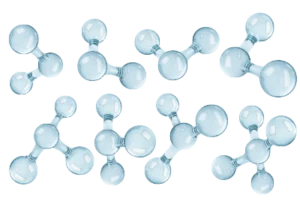Ozone Therapy
Ozone Therapy: Harnessing the Power of Oxygen for Health
Ozone therapy, a holistic and unconventional approach to healthcare, has been gaining attention and recognition for its potential benefits in the world of alternative medicine. This therapy involves the controlled use of ozone, a molecule composed of three oxygen atoms (O3), to promote healing and improve overall well-being. While it’s important to note that ozone therapy remains a subject of ongoing research and debate within the medical community, it’s worth exploring the principles, applications, and potential benefits associated with this intriguing treatment.

Understanding Ozone
Ozone is a naturally occurring molecule in the Earth’s atmosphere, protecting us from harmful ultraviolet radiation. In ozone therapy, medical-grade ozone is created by passing medical-grade oxygen (O2) through an ozone generator. This process produces a highly reactive gas mixture that can be administered to patients in various ways, such as through injection, insufflation, or intravenous infusion.
Principles of Ozone Therapy
Ozone therapy is grounded in several fundamental principles:
Oxidative Stress: Ozone therapy takes advantage of controlled oxidative stress. This means that when ozone is introduced into the body, it triggers a cascade of responses, including the activation of the body’s antioxidant systems. This controlled oxidative stress is believed to stimulate healing processes by encouraging the body to repair damaged tissues.
Immune System Modulation: Ozone therapy is thought to enhance the immune system by improving the body’s ability to fight infections, inflammation, and chronic diseases.
Enhanced Oxygenation: By delivering oxygen at a cellular level, ozone therapy may help improve oxygen utilization in the body. This can lead to increased energy levels and overall vitality.
Applications of Ozone Therapy
Ozone therapy has a wide range of applications, and its use varies depending on the specific health concern. Some common applications include:
Ozone Autohemotherapy: In this method, blood is withdrawn from the patient, mixed with ozone, and then reintroduced into the body. This is often used to stimulate the immune system and treat various conditions, such as infections, chronic diseases, and circulatory issues.
Ozonated Water and Ozone Inhalation: Ozone can be used in water or as a gas for inhalation to address respiratory conditions, including asthma and chronic obstructive pulmonary disease (COPD).
Ozone Insufflation: Ozone gas can be introduced into various body cavities, such as the rectum, vagina, or ear, to treat infections, inflammation, and other local issues.
Ozone Therapy for Skin Conditions: Ozone can be used topically to treat skin conditions like eczema, wounds, and fungal infections.
Potential Benefits and Safety Concerns
Proponents of ozone therapy claim that it can have a positive impact on various health issues, including chronic pain, autoimmune diseases, and even cancer. However, it’s essential to approach these claims with caution, as the scientific evidence supporting the therapy’s efficacy is still limited. Furthermore, ozone therapy should only be administered by qualified healthcare professionals, as improper use can lead to side effects, including lung and eye irritation.
Conclusion
Ozone therapy is a fascinating field of alternative medicine that holds promise for some individuals seeking holistic approaches to healthcare. While it has its proponents and documented cases of positive outcomes, it remains a subject of ongoing research and debate in the medical community. As with any medical treatment, it’s crucial for individuals interested in ozone therapy to consult with healthcare professionals, weigh the potential benefits against the risks, and make informed decisions about their health and well-being. Contact Us Now!
FAQ's
What is ozone therapy?
Ozone therapy is a treatment that uses ozone, a gas made up of three oxygen atoms, to fight infection and disease. Ozone is a powerful oxidizer, which means it can kill bacteria, viruses, and other pathogens. It can also stimulate the production of white blood cells, which help the body fight infection.
What conditions can ozone therapy treat?
Ozone therapy has been used to treat a wide range of conditions, including:
- Arthritis
- Cancer
- Chronic fatigue syndrome
- Fibromyalgia
- Gastrointestinal disorders
- Heart disease
- Infections
- Lyme disease
- Multiple sclerosis
- Pain
- Skin conditions
- Stroke
How is ozone therapy administered?
Ozone therapy can be administered in a variety of ways, including:
- Inhalation: Ozone gas can be inhaled directly into the lungs. This method is often used to treat respiratory conditions, such as asthma and bronchitis.
- Injection: Ozone can be injected into the blood, muscle, or joint. This method is often used to treat chronic pain, arthritis, and other inflammatory conditions.
- Topical application: Ozone can be applied topically to the skin or mucous membranes. This method is often used to treat skin conditions, wounds, and infections.
Is ozone therapy safe?
Ozone therapy is generally considered safe when administered by a qualified healthcare professional. However, there are some potential risks associated with ozone therapy, including:
- Headache: Ozone therapy can cause headaches in some people. This is usually a mild side effect that goes away on its own.
- Shortness of breath: Ozone therapy can cause shortness of breath in some people. This is usually a mild side effect that goes away on its own.
- Chest pain: Ozone therapy can cause chest pain in some people. This is a more serious side effect that should be evaluated by a healthcare professional.
- Infection: Ozone therapy can increase the risk of infection. This is because ozone can damage the skin and mucous membranes, making them more susceptible to infection.




